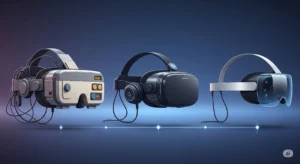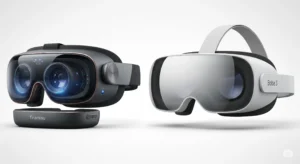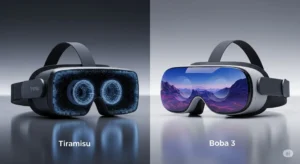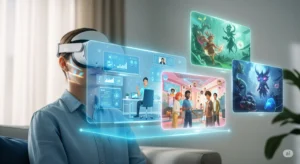Mirai Ningen Sentakuki: Will Japan’s ‘Human Washing Machine’ Change Our World?

https://youtube.com/@unlockancienthistory?si=5IvC7qUYKDJ7L0zj
Welcome to Virtual Universe Hub, where we explore the most groundbreaking innovations shaping our future. Have you ever imagined a machine that could clean you as effectively as a washing machine cleans your clothes? This isn’t science fiction anymore. Japan is turning this incredible concept into reality with the Mirai Ningen Sentakuki, or “Future Human Washing Machine.” This AI-powered shower pod promises to revolutionize personal hygiene, offering a spa-like cleaning and relaxation experience in just 15 minutes. This cutting-edge Japan’s technology is a true glimpse into the future of bathing.
While we often view bathing as a simple, daily task, this AI-powered shower pod elevates it to a new level of convenience and comfort. By integrating advanced Artificial Intelligence (AI) and sensor technology, this human washing machine personalizes the experience to your specific needs. In this deep dive, we’ll explore everything you need to know about this futuristic device: its origins, how it works, its potential benefits and drawbacks, and whether it could truly redefine our daily routines. This isn’t just a machine; it’s a vision for the future of bathing.
Mirai Ningen Sentakuki – A Futuristic Design and Cleaning Process

At first glance, the Mirai Ningen Sentakuki looks like a sleek, minimalist capsule straight out of a sci-fi movie. Its pristine, modern design is a testament to Japan’s technology and is meant to fit seamlessly into any contemporary bathroom. A comfortable chair awaits, inviting you to sit back and let this human washing machine do the work.
The cleaning process is unlike anything we know. This AI-powe⁹red shower pod uses a unique combination of warm water, high-speed jets, and microscopic air bubbles to gently yet thoroughly remove dirt from your skin. This method is similar to how delicate electronics are cleaned, ensuring a deep cleanse without any harsh scrubbing. This process is not only effective but also incredibly gentle on the skin, making it safe for people of all ages. The interior of the human washing machine is also made with materials that inhibit bacterial growth, ensuring the highest level of hygiene. This innovation from Japan’s technology is set to change the future of bathing.
The pod’s design is a testament to its focus on both safety and comfort. The enclosed environment is quiet and serene, transforming the chore of bathing into a stress-free experience. There’s no need to worry about slipping or falling; you simply sit inside this AI-powered shower pod, and the machine handles the rest. This unique blend of design and utility is what makes the Mirai Ningen Sentakuki a truly groundbreaking innovation in personal care.
AI and Sensor Technology: A Personalized Experience

The core of the Mirai Ningen Sentakuki‘s advanced functionality is its sophisticated AI and sensor technology.

Embedded within the pod are sensors that constantly monitor your physical state, collecting real-time data on your heart rate, breathing rate, and body temperature. This data is instantly sent to the AI system, which analyzes it to adjust the pod’s settings accordingly. This level of personalized care is what makes this human washing machine a marvel of Japan’s technology.
Personalized Comfort and Adjustments for the Future of Bathing

The AI is designed to understand your personal needs. If the sensors detect that your body temperature is low, the AI will automatically increase the water temperature slightly for comfort. If you’re feeling stressed or your heart rate is elevated, the AI can lower the water pressure and display calming visuals inside the AI-powered shower pod. This all happens in real-time, providing a customized experience every single time you use this human washing machine. It’s a key part of the future of bathing, driven by Japan’s technology.
Another crucial function of the AI is to detect your emotional state. The pod’s interior features a projection system that can display a variety of soothing visuals. Based on your biometric data, the AI can determine if you’re tired or stressed. It can then project calming scenes, such as tranquil waterfalls or serene ocean views, turning a simple wash into a therapeutic session. This level of personalization elevates the bathing experience from a basic necessity to a form of self-care. It’s truly a step into the future of bathing.
Furthermore, the sensors and AI could potentially be used for health monitoring. This Mirai Ningen Sentakuki machine could collect data on your vital signs during your wash and securely store it, providing you with valuable insights into your daily health. In this sense, it acts as a personal health assistant, offering a deeper understanding of your body. This is a remarkable application of Japan’s technology.
From a 1970s Dream to a 2025 Reality
The idea behind the Mirai Ningen Sentakuki isn’t new. Its roots trace back to a prototype showcased at the 1970 Japan World Expo. At the time, Sanyo Electric unveiled an automatic ultrasonic human washing machine. While futuristic, the machine lacked the sophisticated sensors and AI of today’s AI-powered shower pod technology, and the concept never moved beyond the prototype stage. This early design from Japan’s technology was a precursor to the modern future of bathing.
However, this half-century-old idea inspired Yasuaki Aoyama, the chairman of Science Co., to revive the project. He saw the potential to combine the original concept with modern advancements in AI, sensors, and water technology. His goal wasn’t just to clean a person, but to create a truly relaxing and refreshing experience. His work is a key part of the future of bathing and Japan’s technology.
Now, the project is more than 70% complete and is scheduled to make its highly anticipated debut at the 2025 Osaka Kansai Expo. This global event will serve as the perfect platform to showcase the innovation to the world. Following its debut, Science Co. plans to develop a more compact and affordable home-use version, with the goal of making it accessible to a wider audience. The journey of this human washing machine is a testament to Japan’s continuous commitment to technological innovation, proving that even old dreams can find new life with modern AI-powered shower pod technology.
Challenges and Opportunities in the Global Market
While the Mirai Ningen Sentakuki presents a future full of possibilities, it also faces significant challenges that need to be addressed before it can become mainstream. The two biggest concerns are privacy and cost. This challenge is common for new Japan’s technology aimed at the future of bathing.
Privacy Concerns
The most pressing issue is the collection of personal data. The AI-powered shower pod gathers biometric data like heart rate and breathing patterns. It’s crucial for the company to ensure that this data is stored securely and that users have full control over how it’s used. Implementing robust security protocols, such as strong encryption and transparent data management policies, will be essential to gain consumer trust. This is a vital step for any human washing machine.
High Cost and Accessibility
The initial cost of this Japan’s technology is expected to be very high due to the advanced components, research, and development. This will likely limit its initial availability to luxury spas, high-end hotels, and affluent households. To make it a viable consumer product, production will need to be scaled up to bring down costs. Only then can the future of bathing truly become a reality for everyone.
Significant Opportunities
Despite these challenges, the Mirai Ningen Sentakuki offers immense opportunities. It could be a game-changer for elderly people and individuals with mobility issues, providing them with a safe and independent way to bathe. It eliminates the risk of slips and falls in the bathroom. For busy professionals, this human washing machine offers a time-saving and convenient solution, transforming a daily chore into a moment of pure relaxation. The technology could also have applications in hospitals and healthcare facilities for patient care. Furthermore, its potential for water efficiency could make it a more environmentally friendly option compared to traditional baths. This AI-powered shower pod represents the true future of bathing.
Will It Replace Traditional Bathing?
The Mirai Ningen Sentakuki is a fascinating glimpse into the future of bathing, but will it completely replace traditional bathing? While technology is changing every aspect of our lives, the act of bathing is a deeply ingrained ritual for many. For some, it’s not just about getting clean; it’s a moment of connection, a way to relax, or even a cherished time with family. This debate is at the heart of the future of bathing.
The emotional and sensory experience of a traditional shower or bath is unique and may not be fully replicable by this human washing machine. However, this AI-powered shower pod offers a new option. It’s an alternative for those who prioritize convenience, relaxation, and efficiency. It’s also an important step toward making personal care more accessible for everyone, thanks to Japan’s technology.
The machine’s impact on the environment is another key factor. While this AI-powered shower pod promises water efficiency, the energy required to run the AI and jets must be considered. The debate over whether this human washing machine will become a necessity or remain a luxury will likely continue for years.
Conclusion
In conclusion, the Mirai Ningen Sentakuki is a bold and exciting innovation that blends AI and personal care in a way that could redefine our daily routines. While it may not completely replace traditional bathing, it offers a compelling alternative and a clear vision of the future of bathing. The technology from Japan’s technology is here, and the conversation has just begun. What do you think?
Frequently Asked Questions (FAQs)
What exactly is the Mirai Ningen Sentakuki?
It is a futuristic AI-powered shower pod designed to provide a comprehensive cleaning and relaxation experience in just 15 minutes. It uses high-speed water jets and micro-bubbles to clean the user while monitoring their vital signs and providing a personalized experience.
How does the AI and sensor technology work?
The pod uses sensors to monitor the user’s body temperature, heart rate, and breathing. The AI system then analyzes this data in real-time to adjust water pressure, temperature, and display calming visuals to match the user’s needs and emotional state.
When and where will this technology be available?
The prototype is scheduled to be showcased at the 2025 Osaka Kansai Expo. Following its debut, Science Co. plans to develop a consumer version, though an exact timeline and price have not been announced yet.
What are the main benefits of using this machine?
The key benefits include time-saving, deep cleansing, personalized relaxation, and improved safety, especially for the elderly and individuals with mobility issues. It can also be more water-efficient than traditional baths.
Are there any privacy concerns with the data it collects?
Yes, privacy is a major concern. The machine collects biometric data, so it is crucial for the company to implement strong data security and privacy protocols. Users should be able to control how their data is used.




























